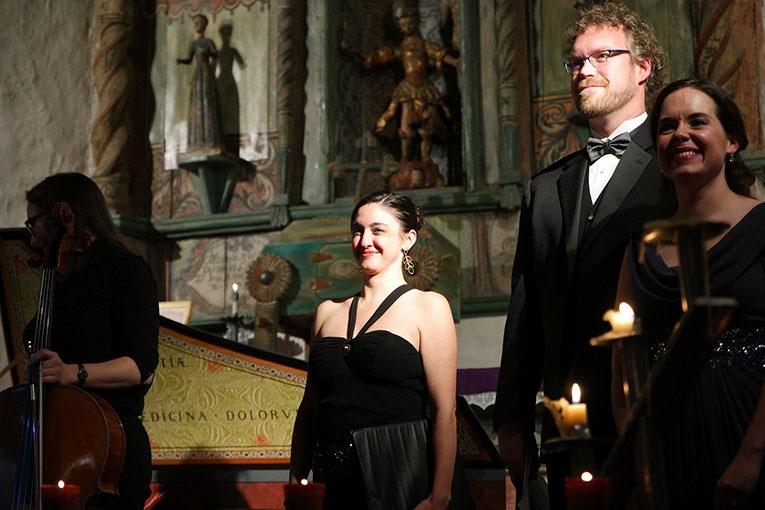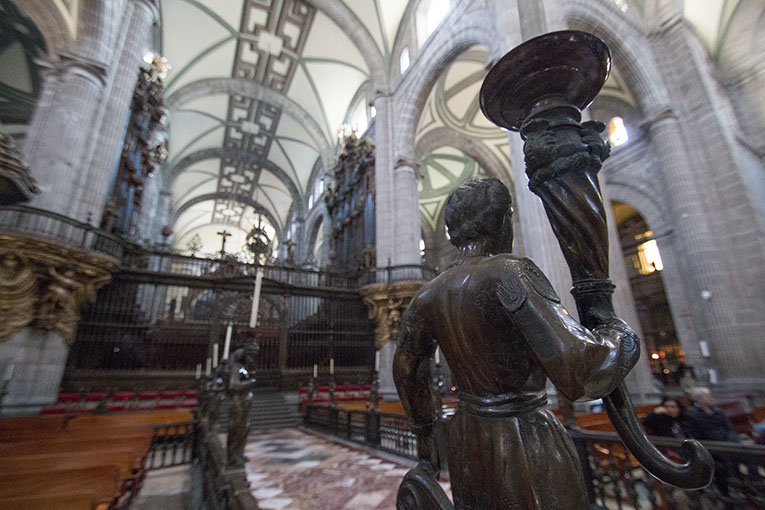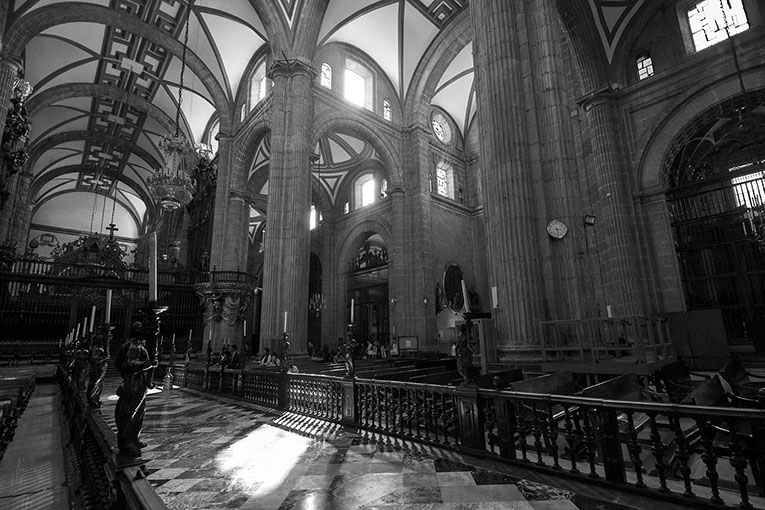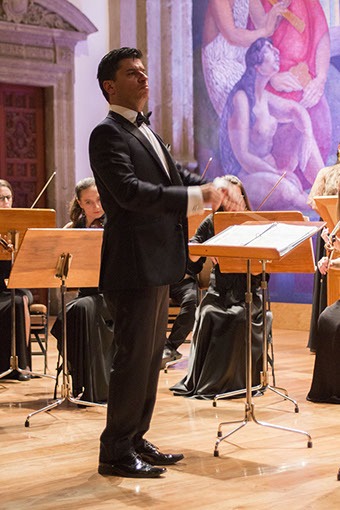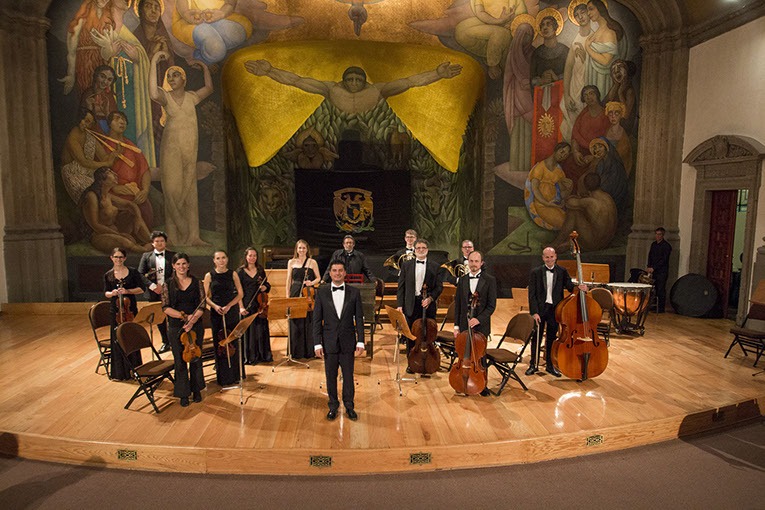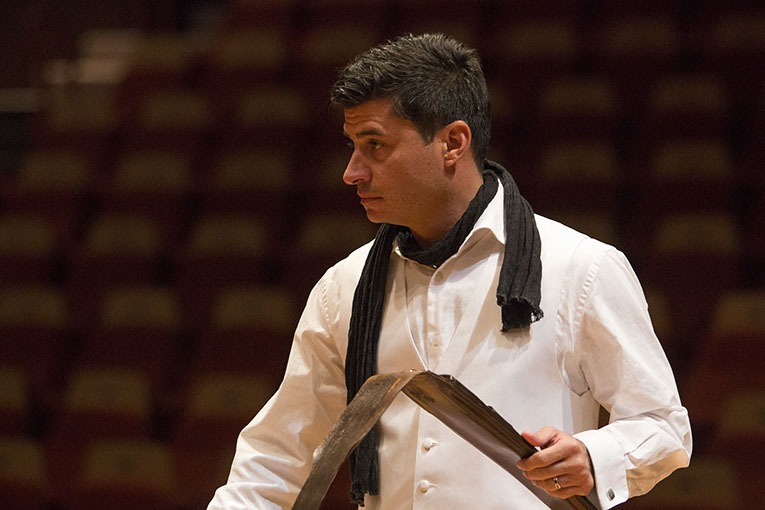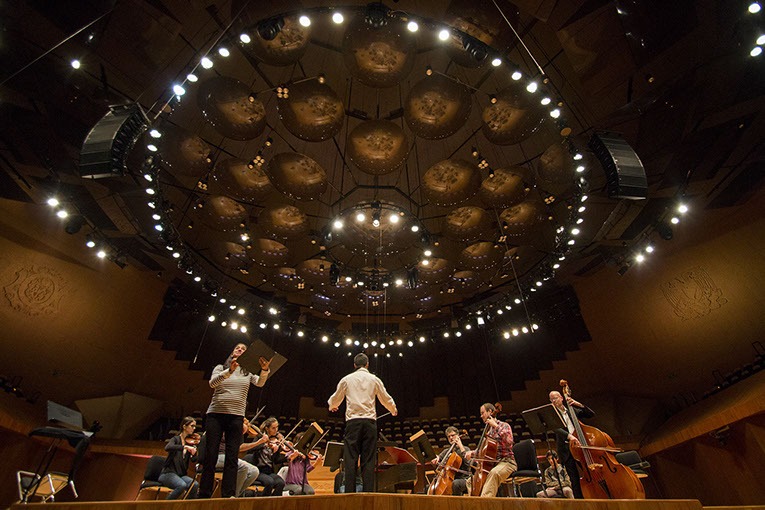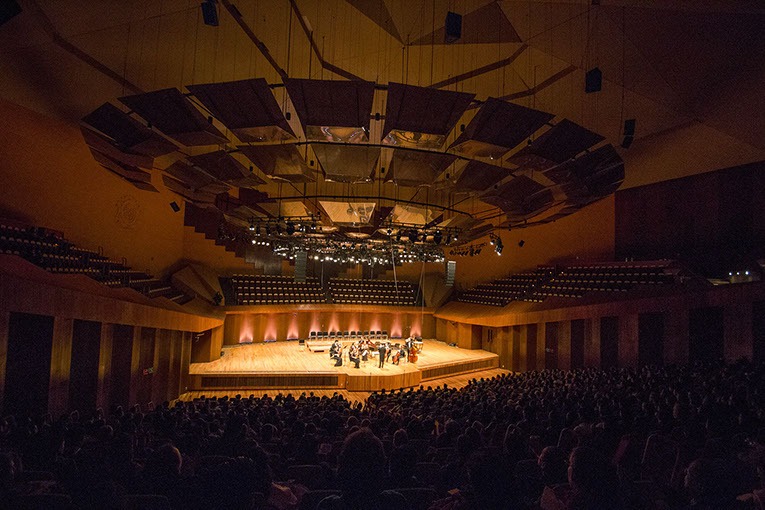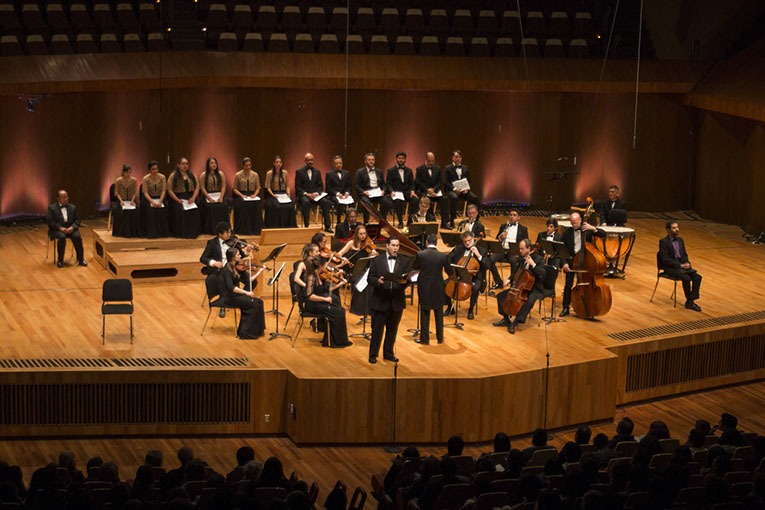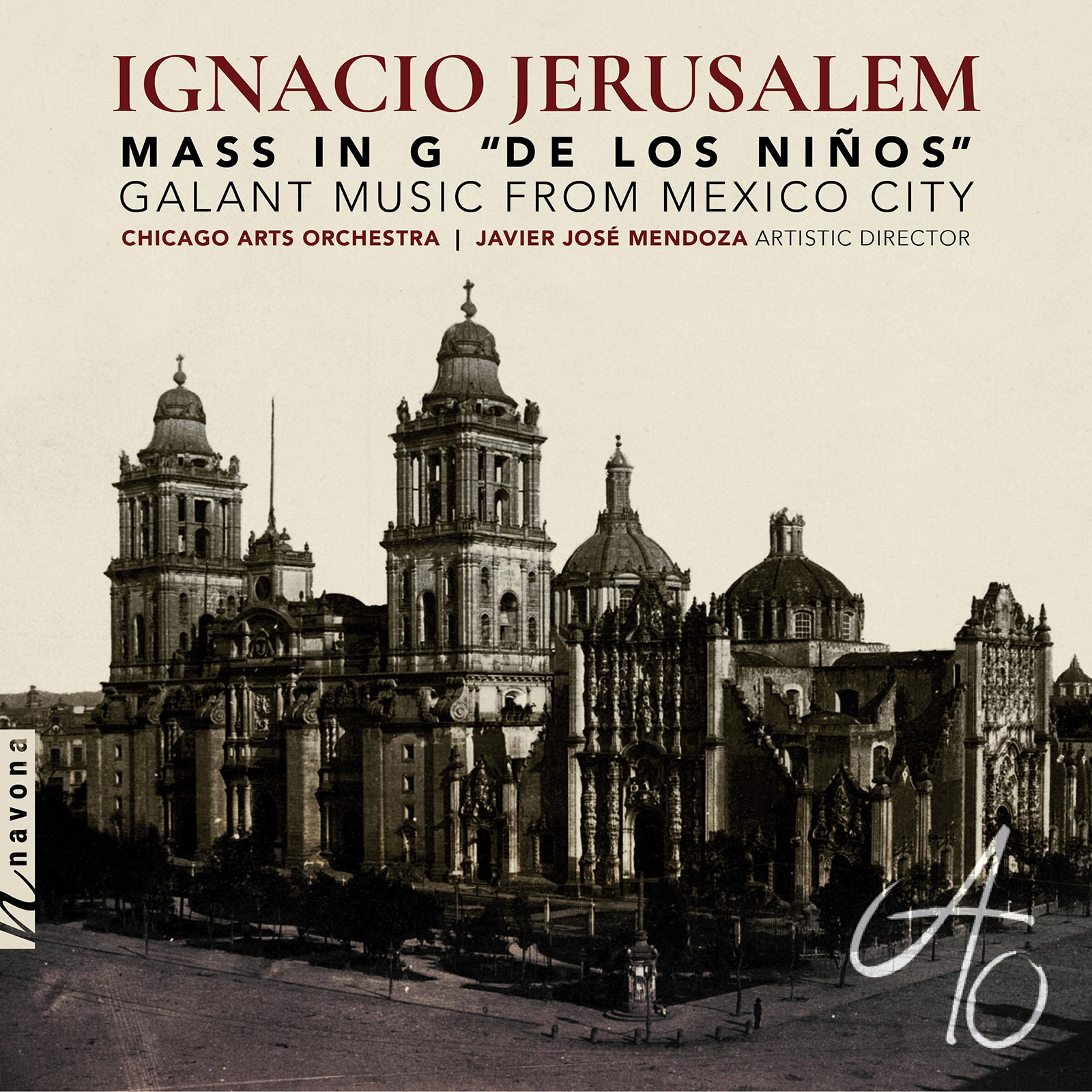
Share Album:
Ignacio Jerusalem
Chicago Arts Orchestra | Javier José Mendoza artistic director
Lovers of Early Music are in for a huge treat with IGNACIO JERUSALEM: MASS IN G, a tribute commemorating the 250th anniversary of the composer's death. The little-known, Italian-born, galant creator, who spent much of his colorful life in Mexico, receives long-deserved attention from the Chicago Arts Orchestra under the baton of Mexican-American conductor Javier José Mendoza.
Considered the most influential composer of galant music in the Americas, Ignacio Jerusalem (1707-1769) might not be as well-known as his European counterparts: but the reason for his limited renown has more to do with a geographical disadvantage, rather than lack of musical ability. The works presented on this album were largely composed towards the end of the emigre's life, in the 1760s, and they bear all of the hallmarks one would expect from a European-born composer of the era. There is plenty of zest, liveliness, spirit, drive; but also a distinctly Italian take on Catholic piety, spiritual reflection and faith.
One might be forgiven to view Jerusalem as a ready-made, run-of-the-mill church composer, considering that most of Jerusalem's oeuvre consists of liturgical works – after all, he spent the last two decades of his life as chapel master of the Catedral de México, which had commissioned plenty of works by him even before his official tenure. Doing so, of course, would mean doing injustice to his delightful secular compositions, such as AL COMBATE which was previously recorded by the Chicago Arts Orchestra and released on Navona Records. Furthermore, one cannot disregard the composers non-liturgical sacred works, such as the charming duet Pedro Amado or the magnificent Incipit Lamentatio Jeremiae Prophetae, which are anything but run-of-the-mill.
IGNACIO JERUSALEM: MASS IN G is a solid attempt at shining a light on a composer whose legacy unjustly suffered from his relative isolation and lack of peerage. It is a well-deserved tribute, and one that will indubitably please the ear as well as the soul – just as the master intended.
Listen
Stream/Buy
Choose your platform
"Plenty of zest, liveliness, spirit, drive; but also a distinctly Italian take on Catholic piety, spiritual reflection and faith."
Track Listing & Credits
| # | Title | Composer | Performer | |
|---|---|---|---|---|
| 01 | Mass in G Major "De los Niños": I. Kyrie | Ignacio Jerusalem | Chicago Arts Orchestra | Javier José Mendoza, artistic director; Chicago Arts Chorale | Jonathan Metzinger, choirmaster; Nythia Martínez, Bruno Rivera, Mallory Harding, and Billy Sefton, soloists | 2:34 |
| 02 | Mass in G Major "De los Niños": II. Gloria | Ignacio Jerusalem | Chicago Arts Orchestra | Javier José Mendoza, artistic director; Chicago Arts Chorale | Jonathan Metzinger, choirmaster; Nythia Martínez, soprano; Mallory Harding, alto; Billy Sefton, tenor | 8:39 |
| 03 | Mass in G Major "De los Niños": III. Credo | Ignacio Jerusalem | Chicago Arts Orchestra | Javier José Mendoza, artistic director; Chicago Arts Chorale | Jonathan Metzinger, choirmaster; Nythia Martínez, soprano; Bruno Rivera, soprano; Mallory Harding, alto; Billy Sefton, tenor | 7:43 |
| 04 | Mass in G Major "De los Niños": IV. Sanctus | Ignacio Jerusalem | Chicago Arts Orchestra | Javier José Mendoza, artistic director; Chicago Arts Chorale | Jonathan Metzinger, choirmaster; Nythia Martínez, Bruno Rivera, Mallory Harding, and Billy Sefton, soloists | 1:24 |
| 05 | Mass in G Major "De los Niños": V. Agnus Dei | Ignacio Jerusalem | Chicago Arts Orchestra | Javier José Mendoza, artistic director; Chicago Arts Chorale | Jonathan Metzinger, choirmaster; Nythia Martínez, Bruno Rivera, Mallory Harding, and Billy Sefton, soloists | 1:44 |
| 06 | Incipit Lamentatio Jeremiae Prophetae | Ignacio Jerusalem | Chicago Arts Orchestra | Javier José Mendoza, artistic director; Chicago Arts Chorale | Jonathan Metzinger, choirmaster; Alexa Græ, alto | 12:09 |
| 07 | ¡Ah! De la Dulce Métrica Armonía | Ignacio Jerusalem | Chicago Arts Orchestra | Javier José Mendoza, artistic director; Chicago Arts Chorale | Jonathan Metzinger, choirmaster; Eleanor Ranney-Mendoza, soprano; Nythia Martínez, soprano | 6:06 |
| 08 | Pedro Amado | Ignacio Jerusalem | Chicago Arts Orchestra | Javier José Mendoza, artistic director; Chicago Arts Chorale | Jonathan Metzinger, choirmaster; Eleanor Ranney-Mendoza, soprano; Nythia Martínez, soprano | 5:50 |
| 09 | Symphony in G Major with Hunting Horns: I. Allegro | Ignacio Jerusalem | Chicago Arts Orchestra | Javier José Mendoza, artistic director; Chicago Arts Chorale | Jonathan Metzinger, choirmaster | 2:11 |
| 10 | Symphony in G Major with Hunting Horns: II. Andante | Ignacio Jerusalem | Chicago Arts Orchestra | Javier José Mendoza, artistic director; Chicago Arts Chorale | Jonathan Metzinger, choirmaster | 3:00 |
| 11 | Symphony in G Major with Hunting Horns: III. Allegro | Ignacio Jerusalem | Chicago Arts Orchestra | Javier José Mendoza, artistic director; Chicago Arts Chorale | Jonathan Metzinger, choirmaster | 2:19 |
Recorded October 12-13, 2019, at Saint Francis Xavier Roman Catholic Church in Wilmette IL
All performing editions for this recording have been prepared by Professor Drew Edward Davies, Northwestern University
Session Producer Brad Michel
Session Engineer John McCortney, Airwave Studios
CHICAGO ARTS ORCHESTRA
Artistic Director Javier José Mendoza
Scholar-in-residence Drew Edward Davies
Violin I Brandi Berry Benson (Concertmaster) Songhea Sackrider, Mariah Schultz
Violin II Yuriy Geyer, Pascal Innocenti, Henry Zheng
Viola Becca Wilcox
Cello Morgan Little
Bass Roland Moyer
Horn John Schreckengost, Thomas Vienna
Harpsichord and Organ Mark Shuldiner
CHICAGO ARTS CHORALE
Choirmaster Jonathan Metzinger
Soprano I Michelle Ford, Katelyn Lee, Nythia Martínez, Eleanor Mendoza
Soprano II Alexa Grae, Sarah Mikulski, Bruno Rivera, Allison Selby-Cook
Alto Thomas Aláan, Scott Dankert, Mallory Harding
Tenor Jared Esguerra, Enrico Bellomo, Billy Sefton
Executive Producer Bob Lord
Executive A&R Sam Renshaw
A&R Director Brandon MacNeil
VP, Audio Production Jeff LeRoy
Audio Director Lucas Paquette
VP, Design & Marketing Brett Picknell
Art Director Ryan Harrison
Design Edward A. Fleming
Publicity Patrick Niland, Sara Warner
Artist Information
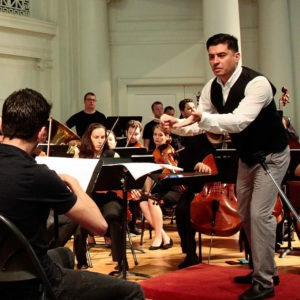
The Chicago Arts Orchestra
The Chicago Arts Orchestra was established by a group of musicians and creative artists to perform great music and to make music accessible and affordable. Comprised of professional musicians with active performance schedules in Chicago, the CAO aims to achieve its mission by providing educational opportunities for the community through the performance of historic and new orchestral music. The CAO seeks to be innovative in its programming and presentation of concerts.
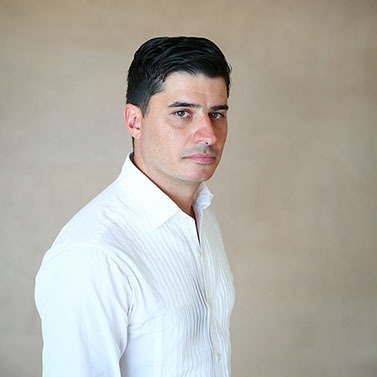
Javier José Mendoza
JAVIER JOSÉ MENDOZA is the Artistic Director of the Chicago Arts Orchestra. Under Mendoza’s direction, the CAO has consistently been named a “Critics Pick” by Time Out Chicago and a “Recommend” by the Chicago Tribune’s John von Rhein. Early Music Today praises the CAO by saying “the Chicago Arts Orchestra plays terrifically,” and Steven Ritter of Audiophile Audition claimed that the CAO is an “exciting group for sure.”
Alexa Græ
ALEXA GRÆ is a multi-disciplinary artist. They are a graduate of Northwestern University where they received a master’s degree in Vocal Performance and Literature and a Certificate in Performance, and they also received bachelor's degrees in Vocal Performance and Composition from Texas Tech University. They have performed with companies such as Haymarket Opera Company, Madison Opera, and Elements Contemporary Ballet.
Eleanor Mendoza
ELEANOR MENDOZA, soprano, performs early music, chamber music, and opera. Over the last ten years, Mendoza has performed with the CAO internationally in Mexico and nationally in Chicago, New Mexico, and Indiana. Mendoza is currently a voice professor at Barry University in Miami FL.
Nythia Martínez
NYTHIA MARTÍNEZ has had the privilege of being choral and musical theater director at Northside College Preparatory High School since 2004. Martínez is a graduate of the Indiana University School of Music, where she earned a Master’s of Vocal Performance in 2004 and both a Bachelor’s of Vocal Performance (B.M.) and Music Education (B.M.E.) in 2002.
Notes
IGNACIO JERUSALEM
One of the most prolific composers to have worked in New Spain (colonial Mexico), Ignacio Jerusalem (1707-1769) followed an extraordinary musical career that spanned three continents. He was born into a musical family in Lecce, Apulia in southern Italy, and later studied in Naples. A musical post with a military regiment would see him stationed in Ceuta, a Spanish enclave on the North African coast, for much of the 1730s. An accomplished violin, cello, and horn player, Jerusalem departed from Cádiz, Spain in 1743 for Mexico City, where he would remain for the rest of his life. From 1750 onward, Jerusalem served as chapel master of Mexico City’s prestigious Metropolitan Cathedral and composed about 260 high quality musical works in the galant style. He also taught and directed liturgical music.
In the 1750s, Jerusalem had a reputation for being a colorful personality: his wife tried to divorce him, he squandered his money, and he even briefly ended up in jail. But in the 1760s, he seemed to turn greater attention to his duties, and he had a fruitful artistic period in which he composed many of his finest works. Eventually, Jerusalem’s music enjoyed a wider distribution than any other composer based in a New Spanish city, and versions of his compositions remain today at ecclesiastical archives that cover the length of former New Spanish territory, from Guatemala in the southeast to California in the northwest. He was the most influential composer of galant music to have worked in the Americas and was regarded as a master in the decades following his death, which was announced by the authorities of Mexico City Cathedral on December 16, 1769 (precisely one year before the birth of Ludwig van Beethoven).
As such, 2019 marked the 250th anniversary of Jerusalem’s death, and a series of distinct musical and academic activities in Chicago, Mexico City, Andalusia, and Miami commemorated the composer’s legacy. 2019 saw exciting advances in our knowledge about Jerusalem, including the discovery by Spanish musicologists Javier Marín-López and José Antonio Gutiérrez of Jerusalem’s posting in Ceuta as well as my own compilation of a comprehensive list of Jerusalem’s compositions that identifies not only as many authentic pieces as possible, but also arrangements of Jerusalem’s music made in later periods. Hopefully through these efforts, as well as a new Selected Works Edition from the Madrid music publisher Dairea Editions, Jerusalem will become better recognized internationally as a significant 18th-century composer.
Most of Jerusalem’s surviving music is liturgical, as his primary job as a composer was to write music for the cathedral. Nonetheless, a few secular works survive within the cathedral archive that show his contribution to the activities of Mexico City’s social elite, especially high profile political events. One of these is Al combate, an ode— previously recorded by Chicago Arts Orchestra on an album from Navona Records— that celebrates Carlos III, King of Spain. A related, but much shorter, ode is Ah de la dulce métrica armonía, which sets a propagandistic text that honors Carlos or his representative in Mexico City, the Viceroy. Since the work is not dated, it is not clear whether it was intended for a specific viceroy, six of whom served during Jerusalem’s tenure at the cathedral, or whether it was used on multiple occasions. The text is local, highlighting the loyalty of America (meaning Spanish territories in the Americas) to the crown and the joy of its residents who bow to their leader, yet unspecific as to the identity of the Prince. In a similar galant style, the charming duet Pedro amado counts as one of many pieces written in honor of St. Peter in Mexico City, and it dramatizes two souls ecstatically envisioning union in heaven with the first leader of the Christian Church.
The major work on this recording is the Mass in G Major for four voices “de los Niños.” Five settings of the Mass Ordinary by Jerusalem survive at Mexico City Cathedral, and this one was written in 1767, toward the end of Jerusalem’s career. In fact, a copy of it at Puebla Cathedral in Mexico has the words “requiescat in pace” (rest in peace) written below the composer’s name on each of its vocal and instrumental parts, probably because it was copied in Mexico City shortly following Jerusalem’s death. According to Italian custom, the Mass is structured as a cantata, meaning that the individual movements are broken up into distinct sections, each with its own character and scoring. Some of these are martial, such as the opening of the Kyrie eleison and the closing “Et vitam venturi saeculi” of the Credo, and the Amen of the Gloria is even lightly fugal. But the work also achieves considerable emotional depth in sections such as the “Et incarnatus est” of the Credo and in the sections cast for solo voices. Another special feature of this Mass is a dialogue passage between voices and natural horns in the “Quoniam” section of the Gloria. As was the case in many Hispanic Masses of the time, there is no Benedictus section of the Sanctus (it would have been sung in chant), and the Sanctus and Agnus Dei movements of the Mass remain brief, placing the weight of the work in the Gloria and the Credo. The subtitle “de los Niños” may refer to the fact that the vocal parts feature the higher voices— originally sing by choirboys— in a chorus divided SSAT, or to the possibility that the work was performed on an occasion when the choirboys took on a significant role. The subtitle may have also served a practical function to differentiate the piece from another Mass Jerusalem wrote in the same key (a role it continues to serve, given that the other G Major Mass was recorded in Mexico in 1995 on the Urtext label). What is certain is that this Mass is not labeled “of the children” because of its ease of performance; on the contrary, it requires elegant, trained singing and playing throughout.
Jerusalem is the only composer in New Spain to have written Italianate symphonies, which were also known as overtures at the time. Three such pieces attributed to Jerusalem survive at Durango Cathedral in northern Mexico, one of which is a stand-alone copy of the overture to Al combate. The Symphony for Hunting Horns is a three-movement symphony with a unique pastoral quality created not only by the two featured horn parts, but also by the “siciliana” rhythms of the slow movement, which signify imaginary pastoral scenes in Italian music of the time. Jerusalem played the horn in addition to string instruments, so it makes sense that he would have written music featuring horns rather than relegating them to accompaniment passages, as some 18th-century composers do. Throughout the program, Jerusalem’s characteristic mixture of emotional depth with period gracefulness is clearly heard, as is the high quality of his compositional craftsmanship for specific instruments and voices.
— Drew Edward Davies, Northwestern University
